One area that I have not explored very much is Jasper National Park and particularly the area around the Town of Jasper. It is a little distant from the usual areas where I like to photograph and so it’s more of an excursion with the extra travel involved . It’s well worth the journey however, this area is replete with excellent photo opportunities. Traveling with friends and fellow photographers, Bob Bear and Stewart Hamilton, I had the opportunity to spend two days harvesting a small part of the photographic richness of Jasper and its namesake national park. The non-stop journey to Jasper via the Icefields Parkway is about 4 hours but it always takes longer. We made a number of stops along the way, including a timeout for lunch. We discovered an idyllic location, Buck Lake where we could take a break, have lunch and capture some pretty, lakeside scenes.
Today’s first photo was taken at Buck Lake and features the Maligne Range in the background. The weather was unsettled that day but we enjoyed a break in the rain to get a clear view and some blue sky. It’s nice to keep the camera dry too! This shot is a pretty straight-forward landscape. Taken with a tripod, in good light I used an aperture setting of f16 to ensure good depth-of-field and sharpness through the full depth of the scene. It’s a wide angle with a focal length of 28 mm. I used a circular polarizer filter to reduce glare on water’s surface, enabling me to capture a little of the lakebed in the foreground.
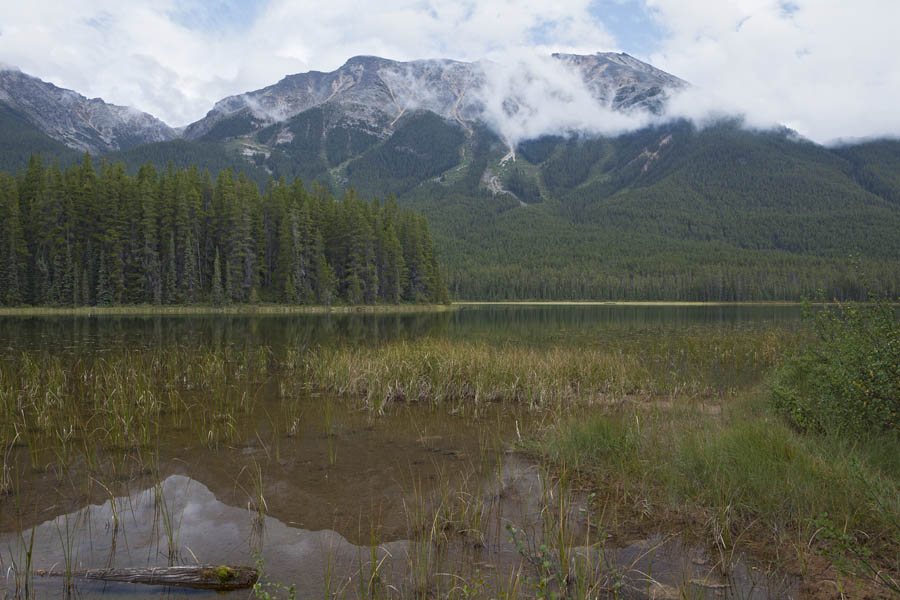
Just a little further up the Parkway we came to Athabasca Falls where we stopped to take some shots. I took a variety of pictures from different angles and locations, with a range of shutter speeds. I chose the following photograph for today’s blog, my preference for its composition and the water’s appearance flowing over the rocks. Using a relatively slow shutter speed, 3/10 sec. I achieved the smoothed look that results from keeping the aperture open while the water keeps moving. The skies had clouded over, dimming the light and enabling me to get the picture with an aperture of f22 and an ISO setting of 100. Athabasca is a powerful, picturesque waterfall, not known so much for its height (24 metres, 80 feet), as it is known for the large quantity of water falling into the gorge. This picture shows only the uppermost part of the waterfall, in my opinion the more interesting part.
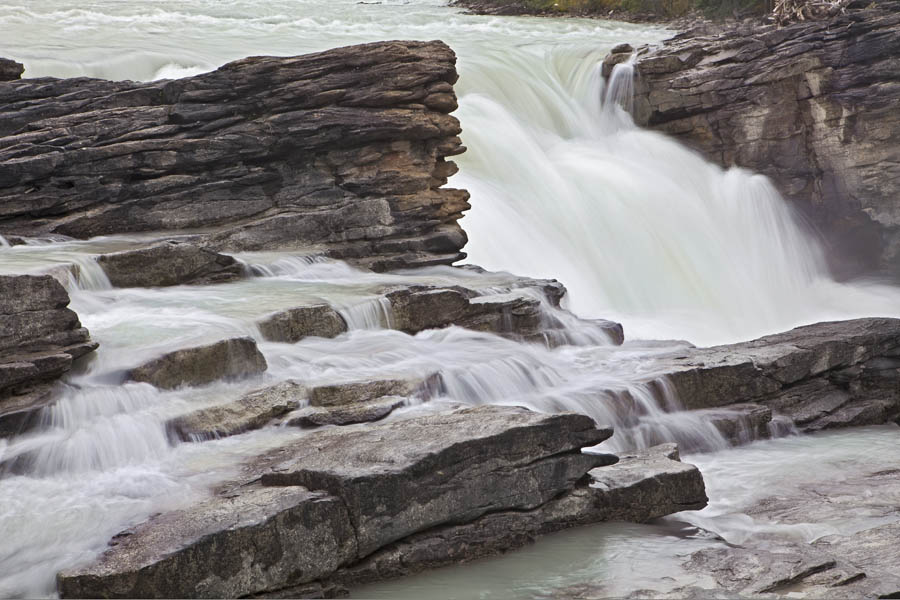
The early morning of our second day was challenging. We took most of our pictures in the rain, a steady drizzle for most of the time. It wasn’t raining hard enough to jeopardize the equipment but it was difficult to keep the lenses and filters clear of water spots. A number of my raw images are stained with water droplets. You won’t see those. This picture, taken early at Pyramid Lake features Pyramid Mountain which emerged sufficiently from the clouds to get a pretty good picture. The shot was taken from McKibben Island on the lake, very close to the mountain, about 4 km (2.5 miles) from the summit. Due to our proximity, I needed to orient the camera in the portrait mode to take in the entire height of the mountain. Doing so, required that I take three, overlapping images to capture the breadth of the scene. I later stitched the three images together to create the final picture, below. I used a wide angle lens, 17-40 mm set at a focal length of 26 mm.
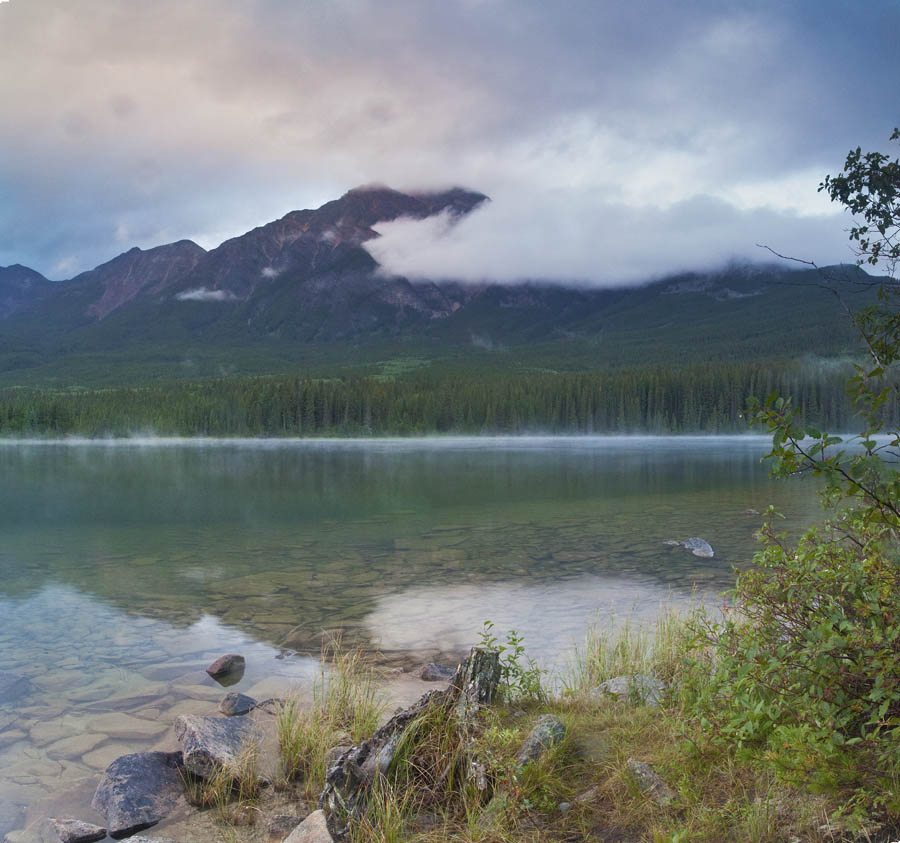
One of the last stops on our two-day adventure was the area around Mount Edith Cavell. With a height of 3,363 m. (11,033 ft), it is one of the tallest mountains in the Canadian Rockies. For our first series of photographs, we ventured to a vantage point due north of the mountain which gave us a good view of the Angel Glacier and the pond at the base of the mountain. The peak of the mountain was obscured by cloud so my picture from that area features all but the summit. Again, proximity made it necessary for me to capture this image as a panorama comprised of three images in portrait orientation. I used the 17-40 mm wide angle lens at a focal length of 17 mm, as wide as I could get. I set the aperture at f16 for good depth-of-field. You can see the receding Angel Glacier on the right and the turquoise-coloured pond at the mountain’s base. If you look very closely, you’ll see a number of people standing at the water’s edge. It gives you a good sense of the immensity of this valley, the glacier and of course Mount Edith Cavell.
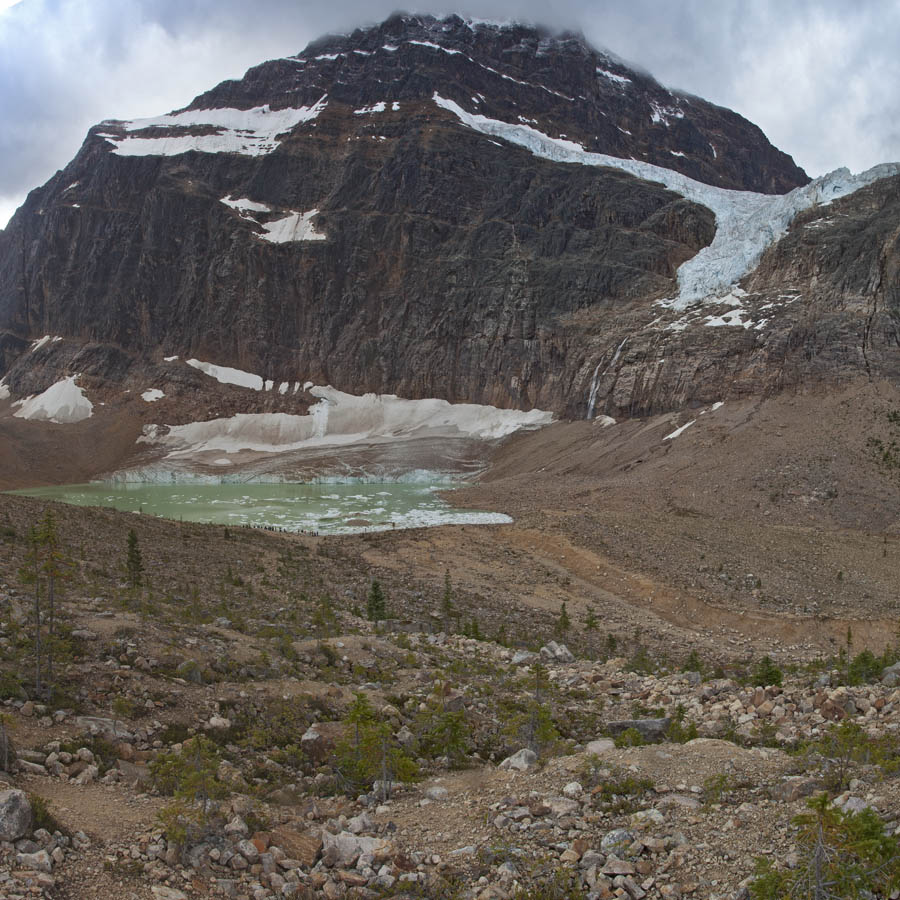
Moving further north, we walked down to Cavell Lake for another round of shots. From this location, I was able to get a different perspective of Mount Edith Cavell, not quite so close. My next picture was taken across the lake and gives a much more complete view of the mountain. I used a tilt-shift lens for this picture, using the shift feature to get the entire height of the mountain into the frame and the tilt feature to increase the depth-of-field of the image. Using this lens I was able to get sharpness throughout without using a very small aperture. The picture was taken with an aperture of f8, giving me the best quality image achievable with the lens. I should note that both peaks in this picture are part of Mount Edith Cavell, the peak on the left being the ultimate summit.
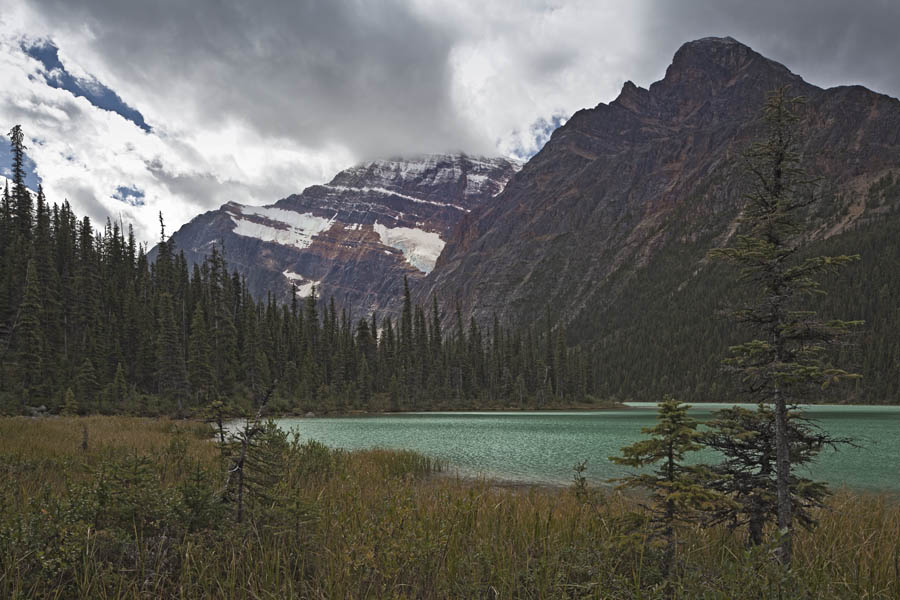
My final shot for today’s post was also taken from Cavell Lake, this time shooting southwest to capture Throne Mountain. From this angle, Throne Mountain does indeed resemble a throne. I was able to get a shot from this location that I very much like: great light, brilliant colour on the water and a gorgeous sky. I used the tilt-shift lens once more to get the best quality image I could.
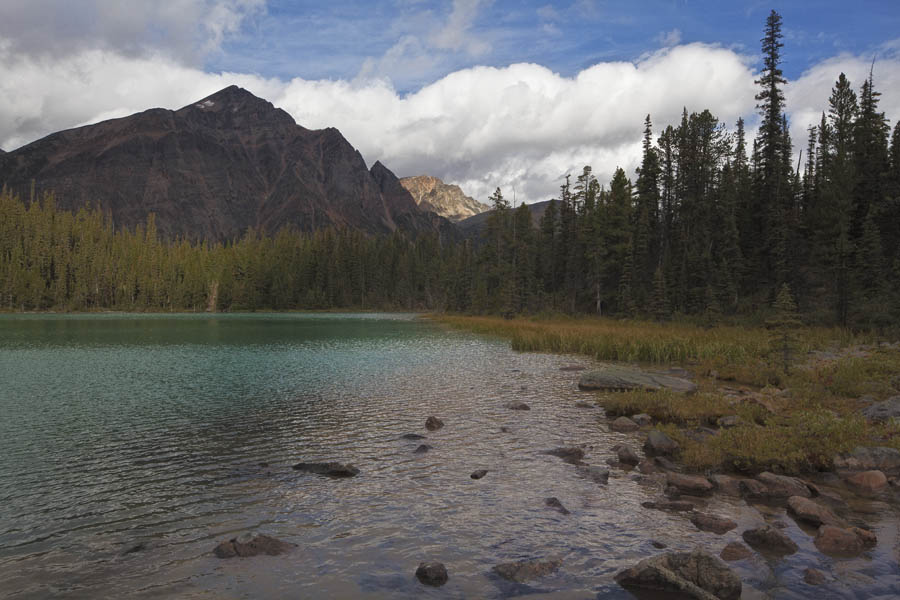
It was a memorable trip, great to be outdoors despite the weather with some good pictures as a bonus. Thanks to Bob and Stu for sharing the experience.

Wonderful “quilting” you did to capture the amazing pic of Pyramid Mountain!
Enjoyed all of these artistic images…….. Water with reflections, ripples, glistening, sharpness of lakebeds ……..beautiful!